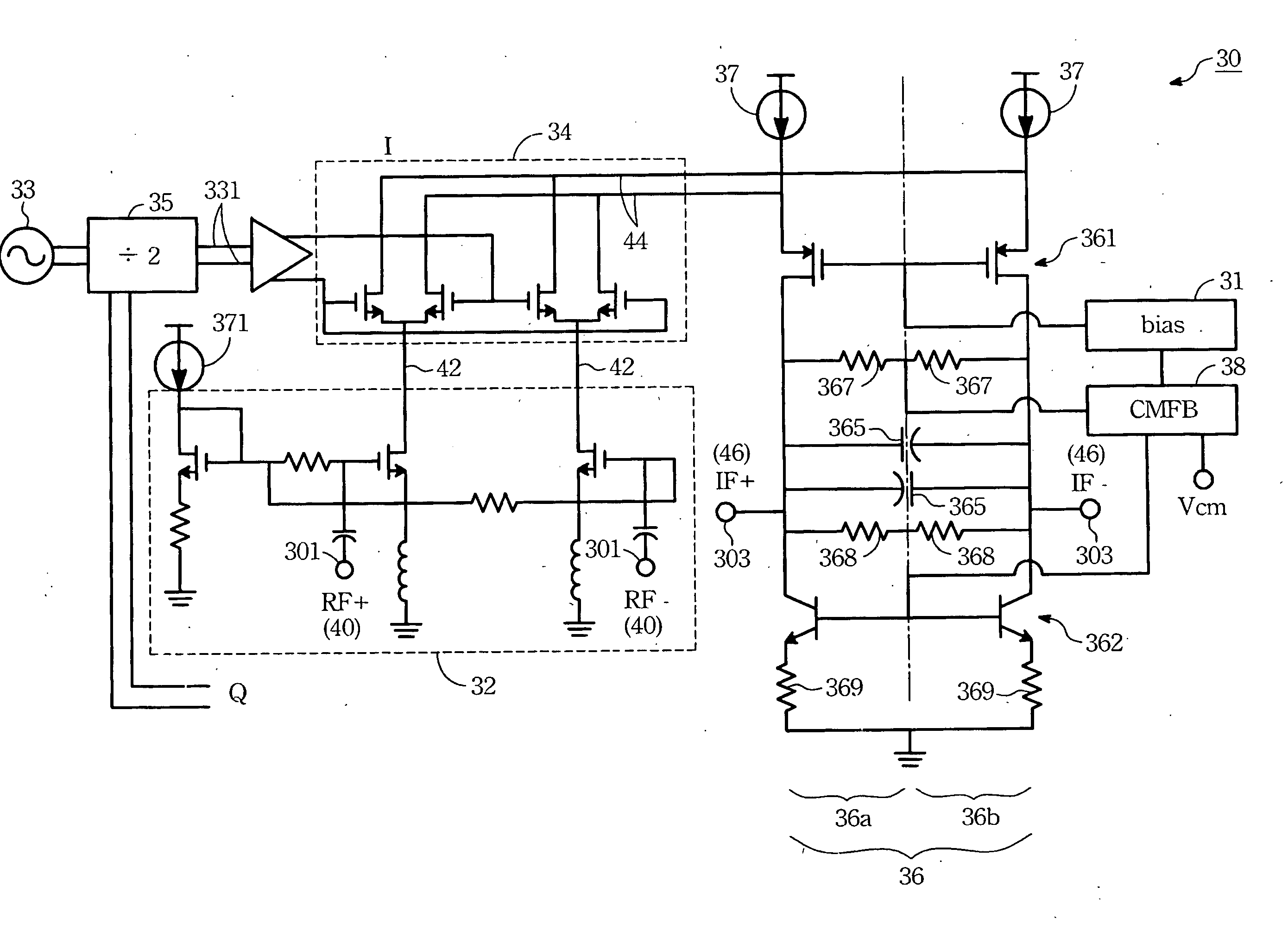Mixer for homodyne RF receiver
a technology of homodyne rf receiver and mixer, which is applied in the direction of demodulation, electrical equipment, transmission, etc., can solve the problems of limiting yield, increasing costs, and requiring external signal conversion, so as to improve iip3 performance and reduce the total output noise of the homodyne rf receiver
- Summary
- Abstract
- Description
- Claims
- Application Information
AI Technical Summary
Benefits of technology
Problems solved by technology
Method used
Image
Examples
Embodiment Construction
[0024] The present invention provides a mixer for a homodyne RF receiver, which is able to be made from a complimentary metal-oxide semiconductor (CMOS) process. The provided mixer comprises a gain stage, a switch stage and a load stage.
[0025] According to related prior arts, the present invention generally relates to the mixer 16a (or 16b) shown in FIG. 1. What is deserved to be mentioned is that although the implemented circuit of some typical LNA 14 is similar with the gain stage of the present invention, however, they belong to separated issues.
[0026] Please refer to FIG. 2. It is a circuit diagram according to one of the present embodiments. As mentioned above, the present mixer 30 comprises a gain stage 32, a switch stage 34 and a load stage 36. The gain stage 32 receives RF signal 40 of differential type and generates a first gained signal 42. Before the RF signal 40 is transferred to the gain stage 32, a pre-selection filter (shown as numeral 12 of FIG. 1) may be used to f...
PUM
 Login to View More
Login to View More Abstract
Description
Claims
Application Information
 Login to View More
Login to View More - R&D
- Intellectual Property
- Life Sciences
- Materials
- Tech Scout
- Unparalleled Data Quality
- Higher Quality Content
- 60% Fewer Hallucinations
Browse by: Latest US Patents, China's latest patents, Technical Efficacy Thesaurus, Application Domain, Technology Topic, Popular Technical Reports.
© 2025 PatSnap. All rights reserved.Legal|Privacy policy|Modern Slavery Act Transparency Statement|Sitemap|About US| Contact US: help@patsnap.com



